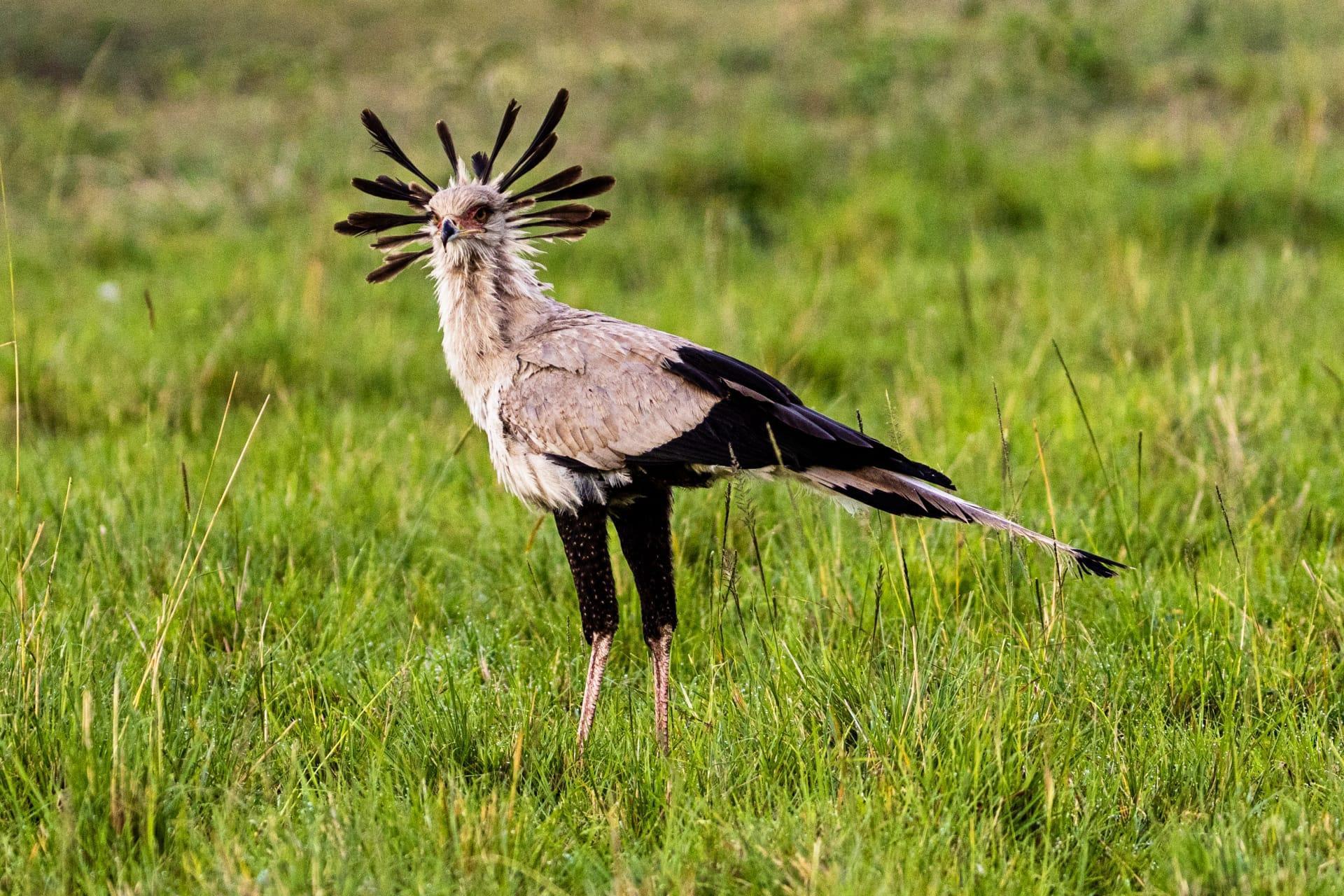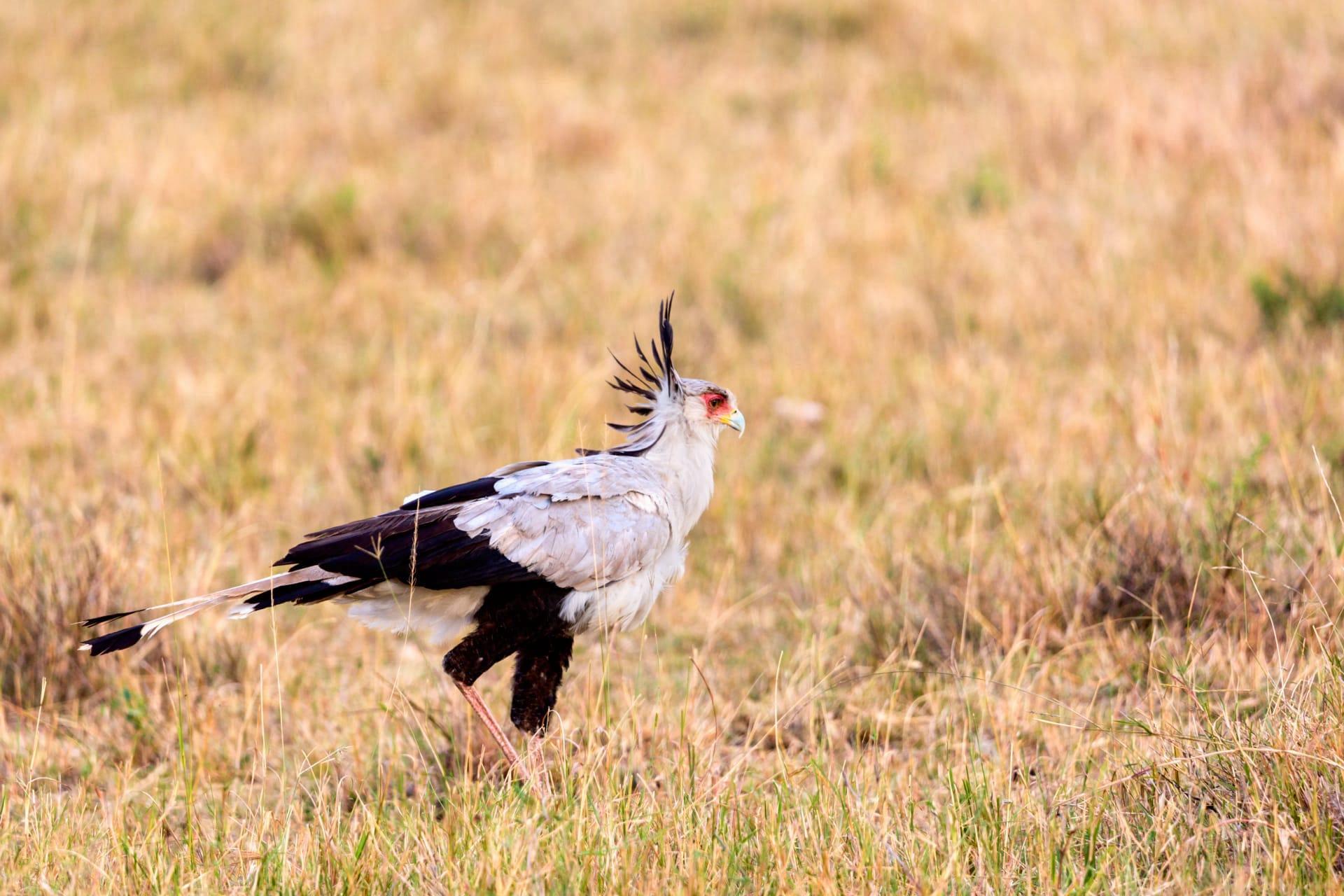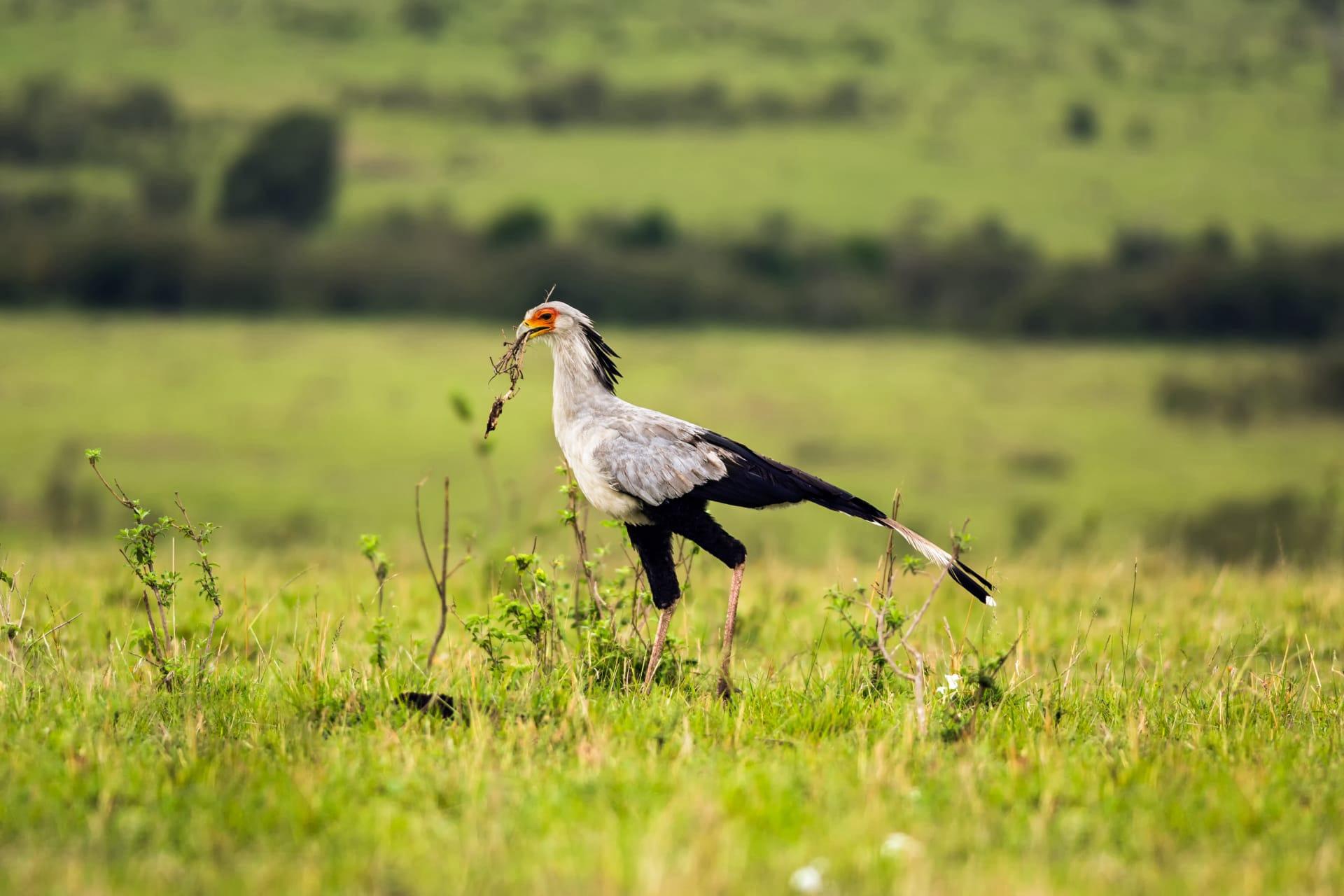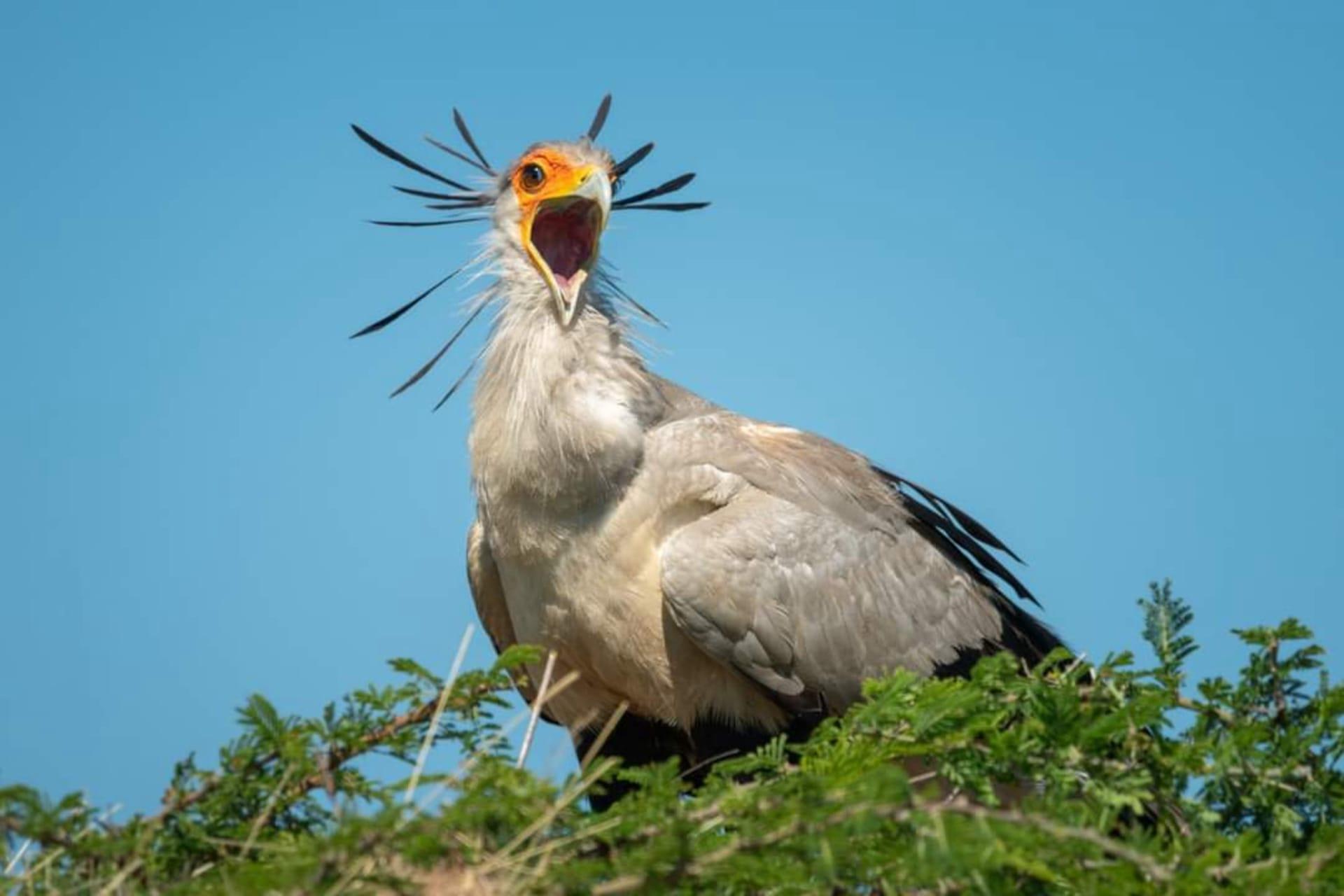1
The Secretary Bird is a stunning sight, standing tall at an average height of 1.3 meters (about 4 feet), making it one of the tallest birds capable of flight. This height advantage isn't just for show; it allows them to spot prey over the tall grasses of the African savannah. They have long, crane-like legs that not only support their tall stature but also serve as powerful weapons. These legs can deliver fatal blows to their prey, primarily snakes, including venomous ones. The force of their kick is incredible, measured at five times their body weight, which is about the same impact force as a human punch.
Equally fascinating is the Secretary Bird's approach to hunting. Unlike other birds of prey that rely heavily on their talons, the Secretary Bird uses its speed and agility to chase down and strike prey with its feet. It can run up to 20 kilometers per hour (about 12 miles per hour), making it one of the fastest terrestrial birds. This unique hunting method allows it to cover vast areas of the savannah, using both sight and sound to locate prey. Once spotted, they can repeatedly stamp on their prey, using their sharp claws to deliver the final blow.

2
The Secretary Bird's name is said to derive from its quill-like feathers, which resemble the pens that 19th-century secretaries would tuck behind their ears. These feathers are located at the back of its head and add to its distinctive appearance. The bird also sports a striking pair of long, black feathers that extend from the back of its head, giving it a unique silhouette against the African sky.
Another intriguing aspect of the Secretary Bird is its mating ritual. These birds are monogamous and often form lifelong pairs. Their courtship includes an elaborate aerial display where the male showcases his flying skills to impress the female. He will fly up to a great height, then plummet down in a series of breathtaking dives and swoops. This not only demonstrates his strength and agility but also his commitment to finding a mate. Once a pair is formed, they work together to build a large nest in acacia trees, where they will raise their young.

3
The Secretary Bird is uniquely adapted to its environment with long eyelashes that protect its eyes from the harsh African sun and dust. These eyelashes are not just functional but also add to the bird's striking appearance. They help the Secretary Bird maintain clear vision while hunting in the bright, open landscapes of the savannah, crucial for spotting prey at a distance.
This bird also has a remarkable digestive system. It can consume large prey whole, thanks to its flexible neck and powerful digestive acids. The Secretary Bird's diet is mainly composed of insects, small mammals, and reptiles, especially snakes. It's known for its ability to hunt and kill venomous snakes, making it a valuable part of the ecosystem by controlling snake populations. This ability has earned it respect and admiration in many African cultures, where it is often seen as a symbol of power and grace.

4
The Secretary Bird is not only a formidable hunter but also plays a vital role in African folklore and mythology. In some cultures, it's considered a symbol of good luck and a protector against evil spirits. Its presence is often associated with courage and strength, particularly because of its fearless approach to hunting snakes.
In terms of communication, Secretary Birds are quite vocal. They produce a range of sounds, from high-pitched whistles to more guttural calls. These sounds are used for various purposes, including attracting a mate, signaling distress, or communicating with their young. Their vocalizations are an important part of their social interactions, especially during the breeding season when pairs establish and defend their territory.

5
The nesting behavior of Secretary Birds is unique. They build large nests, sometimes over 2.5 meters (8 feet) in diameter, using sticks and grass. These nests are often reused year after year, with pairs adding new materials each breeding season. The nest is typically located in the top of a thorny acacia tree, providing safety from ground predators. Both parents share the responsibility of incubating the eggs and feeding the chicks, demonstrating a high level of parental care.
Finally, the Secretary Bird is a significant bird for conservation efforts. While it is not currently considered endangered, its population is on the decline due to habitat loss and changes in land use. Conservationists emphasize the importance of protecting this unique bird, not only for its ecological role in controlling pests and snakes but also for its cultural and symbolic significance in Africa. Efforts to preserve its habitat and raise awareness about its plight are crucial for ensuring that future generations can continue to marvel at this remarkable bird.